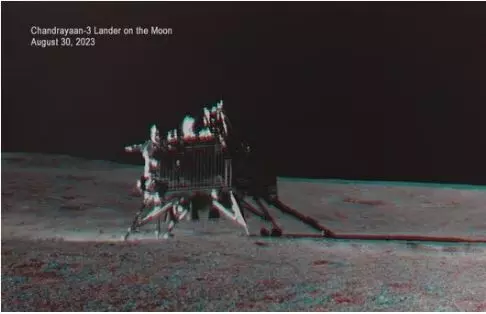
ISRO tries to revive Chandrayaan-3 lander and rover modules on the Moon
text_fieldsBengaluru: In an endeavour that captures the essence of exploration and scientific curiosity, the Indian Space Research Organisation (ISRO) is set to reawaken the lander and rover modules of the Chandrayaan-3 mission on the lunar surface.
With the promise of a new lunar dawn on the horizon this Wednesday, ISRO is racing against time to bring these dormant modules back to life in the unforgiving lunar environment.
The operation, slated to commence on Thursday or Friday, hinges on harnessing the optimal sunshine available on the Moon to rejuvenate the solar-powered modules. The stakes are high, and the chances of success are far from guaranteed but hope prevails in the hearts of scientists.
The Chandrayaan-3 mission, whose initial mission life was just one lunar day equivalent to approximately 14 days on Earth, faces an extraordinary challenge. The lunar night, characterized by temperatures plummeting to beyond -200 degrees Celsius near the south pole where Chandrayaan-3 is stationed, poses an existential threat to these electronics, which were not designed to endure such extreme cold.
ISRO, known for its ingenuity and adaptability, decided to push the limits by attempting to extend the lifespan of the lander and rover modules. They initiated this bold strategy by shutting down all instruments earlier than sunset and placing them in a state of dormancy. The hope was that fully charged batteries would maintain sufficient warmth to tide them through the lunar night.
Should the lander and rover modules awaken successfully, they could potentially continue operations for at least another 14 Earth days. This extended lease on life promises to yield invaluable scientific data and observations.
Chandrayaan-3 has already amassed ground-breaking insights into the Moon's composition and environment, including an unprecedented temperature profile of the lunar topsoil near the South Pole, courtesy of the CHaSTE (Chandra's Surface Thermophysical Experiment) instrument.
One remarkable episode in Chandrayaan-3's journey was the unexpected 'hop experiment' executed by the lander module just before entering hibernation. The lander leapt approximately 40 centimetres from the lunar surface, landing safely a short distance from its original spot.























